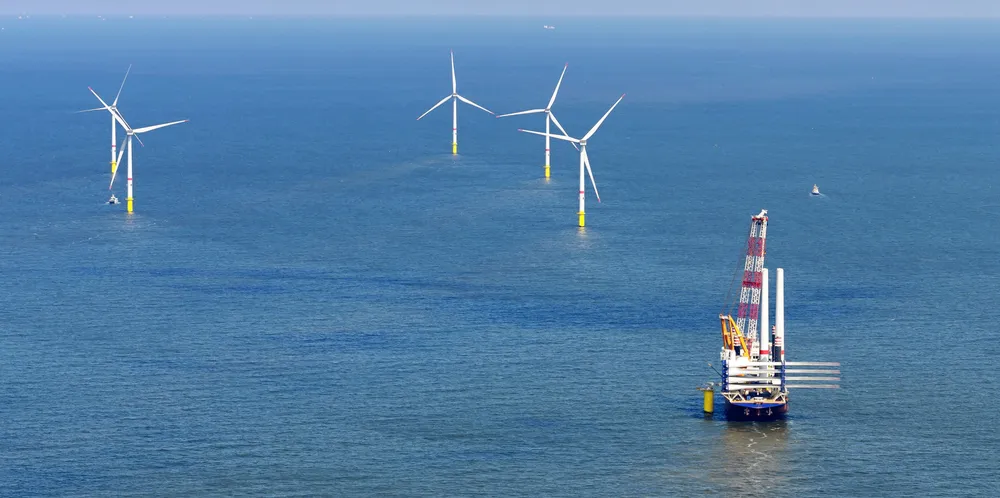Siemens Gamesa turbine 'guillotined' wind engineer's arm
Safety failures and 'bad luck' combined as technician lost limb in accident at offshore project in Belgian waters, says court judgment

An engineer installing a Siemens Gamesa offshore wind turbine lost an arm after it became trapped while he was checking the machine.
The High Court in London held German turbine manufacturer Siemens Gamesa liable for the accident involving its employee Darren Hoadley, who is reportedly seeking £1m ($1.26m) in compensation.
Hoadley, who was known as 'Mr Safety' due to his diligence over the issue, had been installing the nacelle of the turbine – housing the generator and moving machinery – when the accident happened, the judgment recounts.
He had been working with a team of technicians in the turbine in the morning but returned to the nacelle by himself after lunch after he said he was asked to check on various safety pins in the machine.
There was no safety chain in place in the nacelle to warn of moving parts and no noise coming from the machine, which they typically make when in motion.
After a quick visual check Hoadley could not see any moving parts and so, thinking the power was off, he put his arm through a hole in the machine so he could reach around and see if a safety pin was in place, said the judgment.
Having done this, Hoadley realised he could not move his arm and – in a moment of horror – that a disc that was part of the machinery was still moving towards it.
The machinery then “acted as a guillotine which traumatically amputated his left arm.”
The judge hearing the case found that Siemens Gamesa was in “breach of duty” for the incident as its technicians had reactivated the power on the turbine in the nacelle before leaving it but had failed to reinstate the safety chain and warning sign to let staff know it was energised.
There was also an element of “bad luck”, said the judge, not least that the device that severed Hoadley’s arm was, “uniquely for this turbine” and unknown to Hoadley, silent when in motion, whereas for others it typically makes a “very audible sound.”
Further, when Hoadley made a “brief visual inspection” the machinery was at a point in the cycle – lasting around 17 seconds – where it was “aligned” in such a way that made it “difficult to discern motion.”
The chain system used to prevent access when the “very dangerous” machinery is moving was also “very susceptible to human error, as indeed happened in this case.”
The judge did however find it was “equally obvious” that Hoadley had “failed to live up to his reputation as ‘Mr Safety’” on this occasion.
He had “failed to plan,” was working alone “when he should not have been” and “assumed what he should not have assumed without checking.”
Hoadley thought the machinery was locked and that the power was off, “but both assumptions were incorrect,” said the judge. “He did not realise his mistake until his arm was already trapped and it was too late to do anything about it.”
The judge therefore found that Hoadley was “one third to blame” for the accident.
Nevertheless, the judge found that employers must have procedures in place anticipating that employees “may sometimes be careless or inattentive or let their guard drop.”
Hoadley had been “lulled into a false sense of security” by factors such as the absence of the security chain, “a very serious failure and the most potent cause of the accident.”
The judge expressed his “admiration” for how Hoadley had coped with the “very bad injury,” while also commending Siemens Gamesa for their “exemplary” reaction to the accident and subsequent investigation.
Speaking last year, Hoadley said the incident had “haunted” him for a while and he felt like “part of my identity was missing.”
However, Hoadley returned to work for Siemens Gamesa the year after the incident on limited duties. Later, after having a prosthetic arm fitted, he and the company worked together on a programme to retrain him in his former job. He continues to work as an installation lead for the company.
Specialist provider Complete Training Solutions (CTS) said in 2022 that it had worked with the technician and Siemens Gamesa to help with his return to the field.
“The safety of our employees is our absolute priority, and we do everything to prevent accidents like these.”
(Copyright)